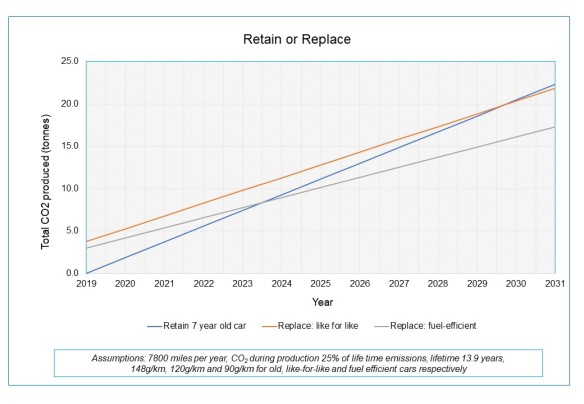For this post we are, of course, talking about ‘Green’ in the environmental sense – not Emerald Green, Leaf Green or even British Racing Green!
According to the Society of Motor Manufacturers and Traders (SMMT), of the 2,311,140 new cars purchased in the UK in 2019, just over 90% were powered solely by an internal combustion engine (ICE): a decreasing proportion being diesel powered and an increasing proportion powered by petrol.
(As an aside to the theme of this post; that switch from diesel to petrol is not entirely good news. The recognised hazards to our health from particulate matter ie soot particles, and oxides of nitrogen, are significantly worse in the emissions from a diesel engine but the higher CO2 emissions from a petrol engine have resulted in an increase, for the third successive year, of this greenhouse gas. Visit the museum’s website for more on this topic in our ‘plastic dinosaurs’ download – no that’s not a misprint, you will find it under the tab ‘Impact of the Internal Combustion Engine’).
Returning to ‘Green’. If you look at your favourite news website, switch on the TV, pick up a newspaper or magazine, it won’t be long before you spot an item discussing our ever-increasing awareness of the contribution that transport, and in particular motor transport, makes to the steadily growing volume of greenhouse gases in the Earth’s atmosphere and the consequent increase in average global temperatures. Elsewhere in our newspaper or magazine we may well be facing an advertisement for the latest, low-carbon family car, with its environmentally friendly low or zero emissions, in the headlines of the advertisement.
Buying a new, low emission car, is being sold to us as a way of saving the planet! Can that really be true? Consider for now, the 90.1% of UK drivers who swapped their old car for a new ICE powered car in 2019.
Look more deeply on specialist websites or the motoring press and it won’t be long before we find statistics concerning the environmental impact associated with building that new car. It is possible to find figures stating the one-off environmental impact of building the car, expressed in terms of CO2 and other greenhouse gas emissions. These can be anything from 20% to well over 50% of the car’s lifetime CO2 emissions.
Why such a wide spread of figures? Well, like all statistics, it depends on the starting assumptions. What is the average car lifetime? When do you start counting the CO2 associated with the build: when the iron, steel and alloys enter the body shop and assembly plant? When the raw materials enter the foundry or the rolling mill? Or when they are still in the ground? All major motor manufacturers operate on a global scale. Do the statistics include global transportation and even end-of-life scrappage?
So, should we retain or replace our ICE car? Purely from the point of view of CO2 emissions, consider replacing a 2012 car with a modern-day equivalent (like for like in the chart below – eg a 2012 Mondeo with a 2019 Mondeo). Making assumptions on the emissions performance of 2012 and 2019 cars, average annual mileage and average age of scrapping, then looking at the chart below, it could be over 10 years before the newer, cleaner engine yields an emissions benefit. Not surprisingly, a like-for-like replacement of a well maintained, low annual mileage 2012 car, may never ‘save’ the CO2 associated with its manufacture.

However, replacing the 2012 car with a small, modern, fuel-efficient petrol car (eg Citroen C1), could show a CO2 benefit within 5 years.
So, retain or replace? There is not a single answer, it will depend very much on our personal motoring lifestyle. There is more information about this on the museum website under the ‘Direction of Travel – Part 1, Environmental’ tab.
Suppose that we were amongst the 9.9% of buyers who went for a battery electric or hybrid car in 2019, was that a good environmental choice? Part 2 of this post will attempt to shed some light on that question.
